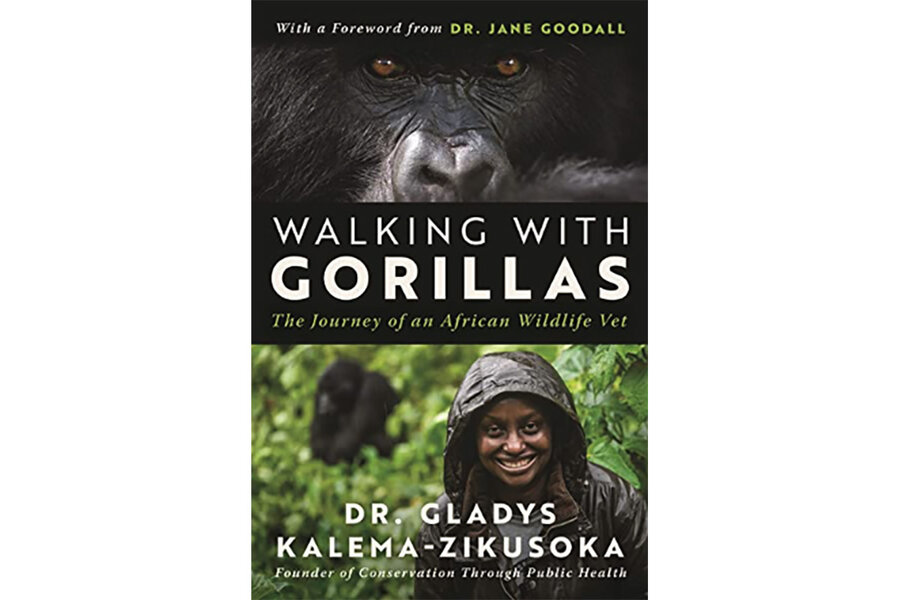No obstacle too tall for this Ugandan wildlife veterinarian
Loading...
Her dream job didn’t exist, so she invented it.
When Gladys Kalema-Zikusoka was studying at the University of London’s Royal Veterinary College in the 1990s, there was no veterinarian assigned to look after the diverse and often threatened wildlife in the national parks of her native Uganda, but even as a young woman, she saw a dire need for one.
So she appealed to the parks’ director and had a job waiting for her after graduation; it was the first of many trailblazing actions she would go on to take in her brilliant career. In her inspiring new memoir, “Walking with Gorillas: The Journey of an African Wildlife Vet,” the conservationist recounts her work advocating for wildlife in the field and beyond.
Kalema-Zikusoka’s early years were packed with challenges and unforgettable experiences that shaped the way she saw conservation. She tells of thrilling and harrowing events, such as the time when she led an effort to airlift a few giraffes from Kenya back to Uganda to replenish a dwindling herd.
She also describes medical mysteries that proved illuminating. An investigation into the source of a skin condition on giraffes and elephants determined ultimately (and counterintuitively) that it was the result of wildlife lost to poaching. Fewer megafauna were around to chomp on vegetation, so plants grew unchecked, creating more opportunities for parasite-carrying insects to proliferate, causing rashes on the remaining animals. “Nothing in an ecosystem functions in a vacuum,” writes the author.
But though she looked out for a variety of species, the mountain gorillas held a special place in her heart. They were critically endangered in the mid-1990s when Kalema-Zikusoka began her career, with only roughly 600 gorillas remaining globally. The primates with whom we share over 98% of our genetic material were struggling against habitat loss, disease, and poaching. “Walking with Gorillas” is full of heartwarming and heartbreaking stories of individual gorillas the author came to know and love.
Her work as a wildlife vet in parks neighboring human settlements taught her the need to engage those communities in looking out for their local gorillas. Blanket moratoriums on poaching didn’t work, but increasing employment opportunities in villages and inspiring people to care for the animals did. Former poachers became rangers. Then came the issue of keeping the primates healthy; gorillas were protected when tourists kept a safe distance and when the wellness of people in neighboring villages improved.
The interconnected nature of the wellbeing of people and the future of the mountain gorilla motivated Kalema-Zikusoka to found the non-governmental organization Conservation Through Public Health (CTPH); much of the latter half of “Walking with Gorillas'' revolves around the challenges of getting CTPH off the ground. The author’s pivot from being a veterinarian to running a pioneering organization with an unorthodox focus on both animal and human health is deeply impressive, especially since she faced discrimination along the way:
“...I knew I would be judged as an African woman, an even greater rarity in the world of conservation, but I was determined to succeed. I had never let my color or gender stop me from accomplishing what I wanted to do, and I wasn’t about to start now.”
A theme emerges in Kalema-Zikusoka’s memoir: Whatever challenge she has come up against, she has been ready to conquer. There was a steep learning curve involved in becoming Uganda’s first official wildlife vet, and she was often thrown into complex and dangerous situations. Sometimes she had help, but frequently, she was required to take the lead and make decisions that could mean life or death for the animals in her care.
As the founder of CTPH, she had to quickly learn how to raise funds and use the money to fulfill her vision of helping people and, by extension, gorillas. The scientist even describes the process of figuring out how to run a profitable coffee business when she realized she could keep residents of gorilla habitat-adjacent towns from poaching if they could earn a living wage farming.
The impact of her bravery, passion, and determination is inestimable, but it’s no surprise that mountain gorillas were upgraded from critically endangered status to endangered in 2018. Though the book could stand to be a bit more personal and narratively driven, “Walking with Gorillas” is an uplifting account of a tremendous career, one that serves as a model that all of us, with enough dedication, could follow.








